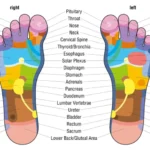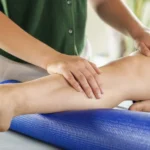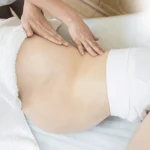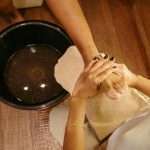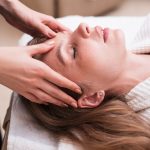Getting a massage is a great way to relax and unwind. However, it is important to remember that there is proper etiquette when getting a massage. Knowing what is expected of you can help ensure you get the most out of your experience and have a comfortable, relaxing time. In this article, we will discuss what is proper etiquette when getting a massage and how to make the most of your experience.
What is Massage Etiquette?

Massage etiquette is the set of rules that must be followed to ensure a pleasant massage experience for both the client and the massage therapist. It involves basic courtesies such as arriving on time, communicating clearly with the therapist, respecting their boundaries, and showing appreciation for their services.
Arriving on Time: It is important to be punctual for a massage appointment. Arriving late may result in a shortened massage session, as the therapist may have other clients scheduled after you. If you are running late, it is polite to call the massage therapist to notify them.
Communication: Before the massage session, it is important to communicate with the therapist about any medical conditions or specific areas of discomfort. During the massage, it is important to provide feedback about the pressure, temperature, and other aspects of the session.
Respect Boundaries: Massage therapists are professionals who maintain strict boundaries between themselves and their clients. This includes not engaging in sexual activity or any kind of inappropriate behavior.
What Should You Not Do During a Massage:
| Don’t | Reason |
|---|---|
| Talk on the phone | It is important to maintain a quiet and peaceful environment during the massage. |
| Eat or drink | This can lead to an uncomfortable massage experience. |
| Wear strong perfumes or colognes | Strong scents can be overwhelming for the massage therapist and other clients. |
| Request sexual services | This is inappropriate and strictly forbidden in the massage therapy industry. |
Showing Appreciation: After the massage, it is polite to thank the therapist for their services. Showing appreciation for the massage session with a tip is also common practice.
Before the Massage
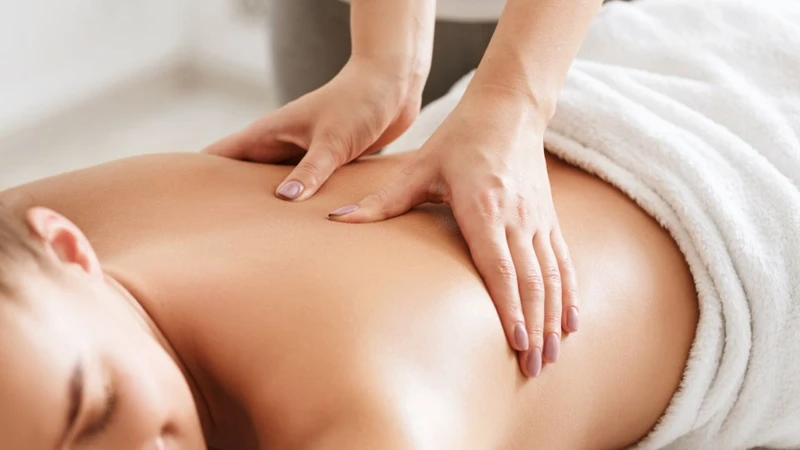
What to Do
Arrive Early: Arrive at least 15 minutes prior to your appointment, so you have time to fill out any necessary paperwork and get settled.
Communicate Your Needs: Before your massage, you will have the opportunity to let your massage therapist know about any areas of your body that need special attention. Make sure you communicate any medical conditions or allergies, so your massage therapist can tailor the massage session to your needs.
Speak Up: During your massage, it may be necessary to adjust the pressure or the room temperature. Don’t be afraid to speak up and let your massage therapist know if something isn’t working for you.
What Not to Do
Avoid Eating or Drinking: Eating a large meal before your massage is not recommended, so try to avoid eating at least an hour before your appointment. Also, avoid drinking too much alcohol or caffeine before your massage, as both can make it difficult to relax.
Skip the Perfume: For your comfort and the comfort of other guests, it’s best to avoid wearing perfume or cologne during your massage session.
Respect the Room: Conversation should be kept to a minimum during your massage session, as this is a time for you to relax and find inner peace.
During the Massage
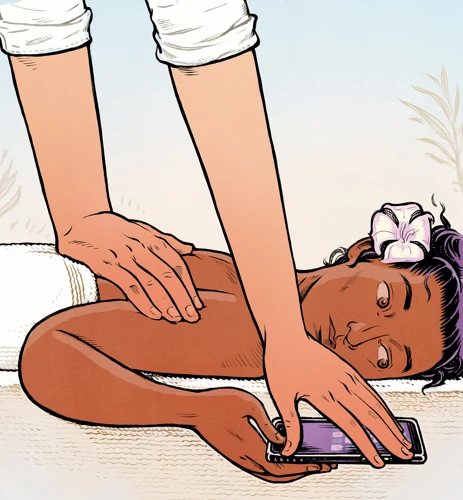
What to Do
Be courteous and respectful to the massage therapist. Let them know if the pressure is too hard or too soft. Follow their instructions and keep quiet during the massage. Focus on your breathing and relax as much as possible.
What Not to Do
Do not talk excessively during the massage. Avoid using your phone and distracting the massage therapist. Do not move around or adjust the massage table during the massage. Lastly, do not eat or drink during the massage.
After the Massage

What to Do
Take your time. After your massage, allow yourself a few moments to relax and unwind before you get dressed. Don’t feel the need to rush out of the room right away.
Drink plenty of water. Staying hydrated helps your body flush out toxins that were released during the massage.
Give feedback. Let the massage therapist know what worked and what didn’t. This helps them adjust the pressure or technique for your next massage.
What Not to Do
Don’t forget to tip. Tipping your massage therapist is customary and greatly appreciated.
Don’t overdo it. You may feel energized after a massage, but it’s important not to overextend yourself. Stick to light activities for the rest of the day and take it easy.
Don’t skip your appointment. If you need to cancel or reschedule, give as much notice as possible. Massage therapists rely on their appointments to make a living, so it’s important to be courteous.
Tips for Optimal Relaxation
Communicate: Be sure to communicate with your massage therapist about the pressure and any areas of discomfort. It is important to let your massage therapist know if the pressure is too light or too heavy.
Breathe: Focused breathing is a great way to relax your body and mind. Taking slow, deep breaths will help you relax and release tension.
Prepare: Make sure that you are prepared for your massage by arriving early and making sure that you are wearing comfortable clothing. Doing this will help you relax and get the most out of your massage.
Stay Hydrated: Make sure to drink plenty of water both before and after your massage. Staying hydrated will help your body flush out toxins and feel more relaxed.
Stay Quiet: It is important to remain quiet during your massage. This will help you relax and allow the massage therapist to focus on the massage.
Avoid Eating: It is best to avoid eating a large meal before your massage. Eating a large meal can make you feel uncomfortable during the massage.
Frequently Asked Questions
What should I wear for a massage?
Comfort: When getting a massage, comfort should be your top priority. Opt for clothing that is loose and comfortable, such as sweatpants and a t-shirt or a tank top and shorts. You may also be given a robe or a sheet to cover up with.
Undergarments: Depending on the massage technique you choose, you may or may not need to wear undergarments. Generally speaking, if you’re receiving a deep-tissue massage, it’s best to wear underwear.
Accessibility: Choose clothes that are easy to remove and put back on, in order to allow the therapist to access the areas that need to be massaged.
Footwear: You don’t need to worry about footwear during a massage, as you will be asked to remove your shoes before getting on the massage table.
- Loose clothing
- Undergarments, if needed
- Clothing that is easy to remove and put back on
- No footwear
Are There Any Steps I Should Take to Prepare for My Massage?
- Drink plenty of water: Before and after your massage, drinking plenty of water helps to replenish the fluids lost during your treatment.
- Avoid heavy meals: Eating too much before a massage can make you feel uncomfortable. Sticking to light snacks or avoiding food altogether is a better option.
- Take a shower: A shower before a massage helps to remove any excess dirt or sweat from your body, so you can enjoy the massage in a cleaner environment.
- Communicate any concerns: Before your massage, let your therapist know about any medical conditions, allergies or sensitivities you have, as well as any areas of your body you would like them to be especially careful with.
- Choose the right clothing: Wear comfortable, loose-fitting clothes for your massage. Avoid wearing anything too constricting or that may get in the way of the therapist’s work.
- Relax: Take some time to relax and clear your mind before your massage. This will help you get the most out of your session.
Is Talking During a Massage Okay?
It is perfectly acceptable to talk during your massage, as long as it doesn’t interfere with the therapist’s ability to focus on the massage. If you have any questions or feel uncomfortable, it is important to communicate with the therapist. However, if you prefer to remain silent, that is totally acceptable as well.
How can I make sure I get the most out of my massage?
Communicate with your massage therapist. Before the massage, discuss your expectations and any areas of tension or discomfort. Make sure to tell the therapist if the pressure is too intense or not enough. During the massage, don’t be afraid to speak up if you need anything or have questions.
Drink plenty of water. Drinking plenty of water before and after your massage can help flush out toxins released during the massage, prevent dehydration, and reduce the risk of soreness.
Limit distractions. To make the most of your massage, try to relax and stay in the present moment. Turn off your phone and any other distractions that may keep you from fully enjoying the experience.
Discuss any health conditions. Make sure to share any health conditions or medications you are taking with your massage therapist before your massage. This will help the therapist adjust the massage to suit your needs.
Is it appropriate to tip for a massage?
Yes, tipping for a massage is appropriate. It is a gesture of appreciation and a way to thank your massage practitioner for the service provided. Here are a few tips for tipping:
- Consider the quality of service. If the massage was exceptional, you may want to tip more.
- Tip in cash. It is easier for the practitioner to keep track of and is more appreciated.
- Tip in proportion to the cost of the massage. 15-20% is considered standard.
- Ask your practitioner if they accept tips. Some spas or massage establishments may not.
Tipping your massage practitioner is a polite way to show your appreciation for a job well done. It is also a way to ensure that you will receive the same quality of service the next time you visit.
Conclusion
Massage therapy is an important part of health and wellness, and proper etiquette is essential for making the most of your massage. From the moment you book your appointment to the end of your massage, be sure to respect the massage therapist and their protocol to ensure a positive experience for everyone. Following these tips will help you get the most out of your massage, and ensure that you leave feeling relaxed and refreshed.
📚 References
⚠️ Disclaimer:
This article is for informational purposes only and does not constitute medical advice. Always consult with a licensed healthcare provider or certified massage therapist before beginning any new treatment, especially if you have pre-existing health conditions or concerns.


